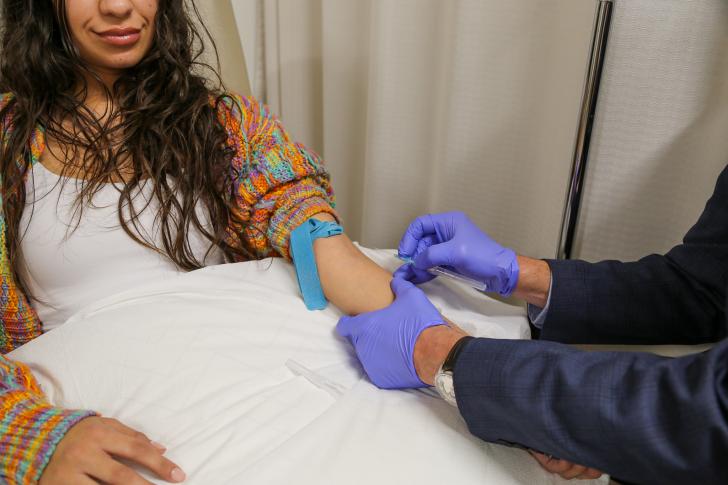Four Ways to Maximize Skin Health

Published
Skin acts as your barrier between the internal and external environment and plays a role in protecting your body from infection and maintaining homeostasis by regulating temperature and water loss (Boelsma et al., 2001). This is even more of reason to pay attention to and take steps to maximizing your skin health. By working on the following, you are well on your way.
1. Wear sunscreen every day.
This tip is especially important as we head into winter. People often stop using sunscreen after the summer, however, you should wear it daily. A statement from the American Academy of Dermatology says, “…sunscreen remains a safe, effective form of sun protection. As one component of a daily sun-protection strategy, sunscreen is an important tool in the fight against skin cancer, including melanoma, the deadliest form of skin cancer.” They recommend to reducing the risk of skin cancer and premature aging by using a water-resistant, broad-spectrum sunscreen that protect against UVA and UVB radiation (check the bottle labeling). They also emphasize daily use of at least 30 SPF on all sun-exposed areas in conjunction with other sun-safe practices such as limiting exposure, finding shade, and wearing things like hats and sun glasses (Lebwohl, 2015).
2. Eat whole foods with healthy fats.
Our cells, including our skin cells, contain a phospholipid cell membrane. Phospholipids are molecules that are mostly composed of two lipid (fat) tails. Increasing your healthy fats can help to maintain the integrity of those cell membranes. Healthy fats include nuts, seeds, avocadoes, fatty fish (like wild-caught salmon), and beans.
3. Pay attention to any changes.
Skin changes can be an indication of your health status. A lot of different diseases can show up on the skin first. It is important that you notice and tell your physician if you see any changes. This includes monitoring your moles and freckles as well! If you have a lot of them, taking a picture can be helpful for tracking changes over time.
4. See your dermatologist regularly.
Just like any other preventative medicine, it is best to establish care with a dermatologist that performs regular skin checks on you. Dermatologists are trained to identify and treat skin concerns including skin cancer (basal cell carcinoma, squamous cell carcinoma, and melanoma). Skin cancer is the most common cause of cancer in the United States (Guy et al., 2015).
Prevention is the best medicine for skin health. By following this tips you are on your way to maintaining healthy skin, protecting against skin cancer, and catching any concerns early on.
Erin Johnson is a licensed naturopathic physician practicing at Bastyr Center for Natural Health in Seattle, WA. She believes that health involves a holistic examination of the patient that takes into account the goals and priorities of each individual. Her clinical interests include women’s health, pediatrics, family medicine, and dermatology.
References:
Boelsma, Esther, Henk FJ Hendriks, and Len Roza. “Nutritional Skin Care: Health Effects of Micronutrients and Fatty Acids.” Am J Clin Nutr 73.5 (2001): 853–864. Am J Clin Nutr. Web.
Guy GP, Thomas CC, Thompson T, Watson M, Massetti GM, Richardson LC. “Vital signs: Melanoma incidence and mortality trends and projections—United States, 1982–2030.” MMWR Morb Mortal Wkly Rep. 2015;64(21):591-596.


